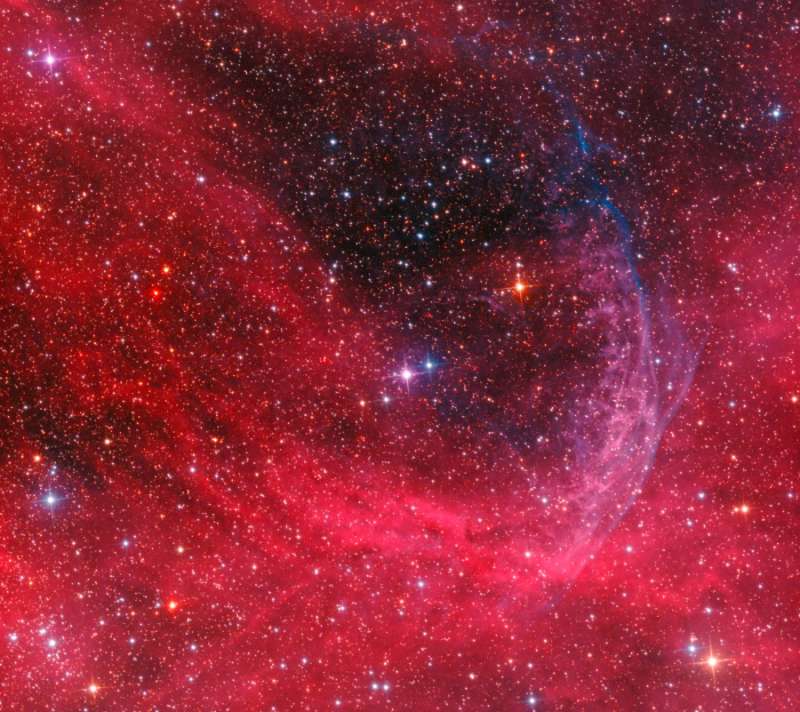Credit & Copyright: Don Goldman
Explanation:
Made with narrow and broad band filters,
this colorful cosmic snap shot covers a field of view about
the size of the full Moon within the
boundaries of the constellation Cygnus.
It highlights the bright edge of a ring-like nebula traced by the
glow of ionized hydrogen and oxygen gas.
Embedded in the region's interstellar
clouds of gas and dust,
the complex, glowing arcs are sections of bubbles or shells of
material swept up by the wind
from Wolf-Rayet star WR 134,
brightest star near the center of the frame.
Distance estimates put WR 134 about 6,000 light-years away, making
the frame over 50 light-years across.
Shedding
their outer envelopes in powerful stellar winds,
massive Wolf-Rayet stars have burned through their nuclear fuel at a
prodigious rate
and end this final phase of massive star evolution in
a spectacular supernova explosion.
The stellar winds and final supernovae enrich the interstellar
material with heavy elements
to be incorporated in
future generations of stars.
1999 2000 2001 2002 2003 2004 2005 2006 2007 2008 2009 2010 2011 2012 2013 2014 2015 2016 2017 2018 2019 2020 2021 2022 2023 2024 2025 |
Yanvar' Fevral' Mart Aprel' Mai Iyun' Iyul' Avgust Sentyabr' Oktyabr' Noyabr' Dekabr' |
NASA Web Site Statements, Warnings, and Disclaimers
NASA Official: Jay Norris. Specific rights apply.
A service of: LHEA at NASA / GSFC
& Michigan Tech. U.
|
Publikacii s klyuchevymi slovami:
stellar wind - tumannost' - zvezdy Vol'fa-Raie - zvezdnyi veter
Publikacii so slovami: stellar wind - tumannost' - zvezdy Vol'fa-Raie - zvezdnyi veter | |
Sm. takzhe:
Vse publikacii na tu zhe temu >> | |
